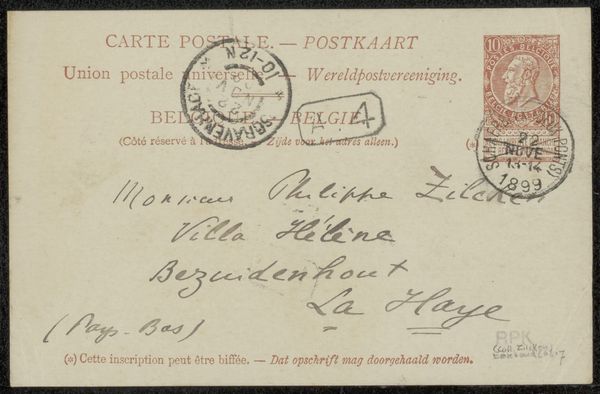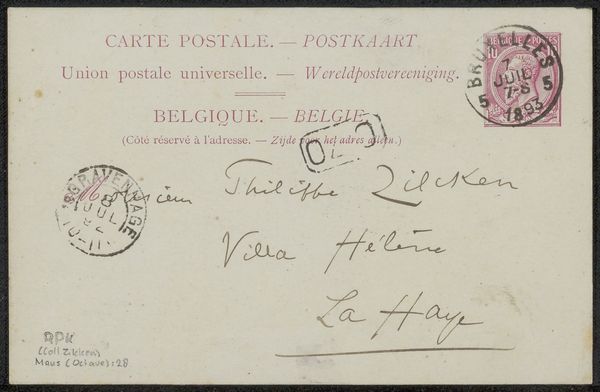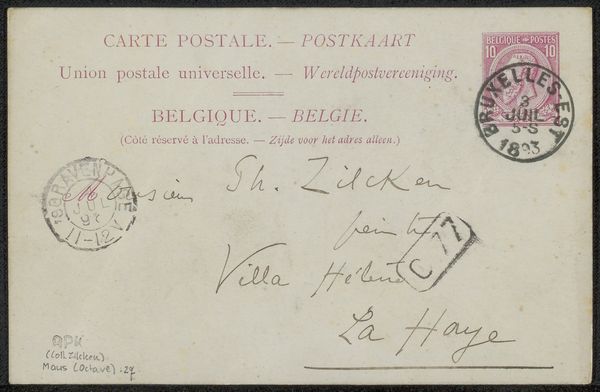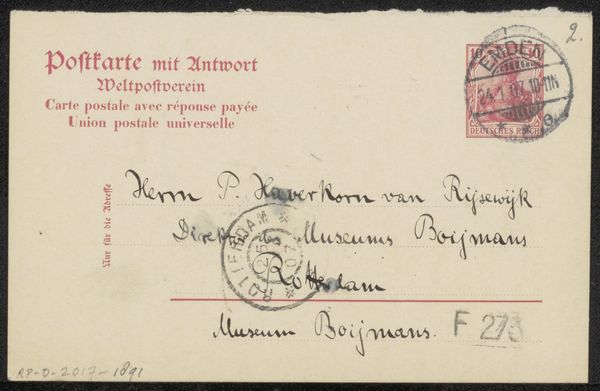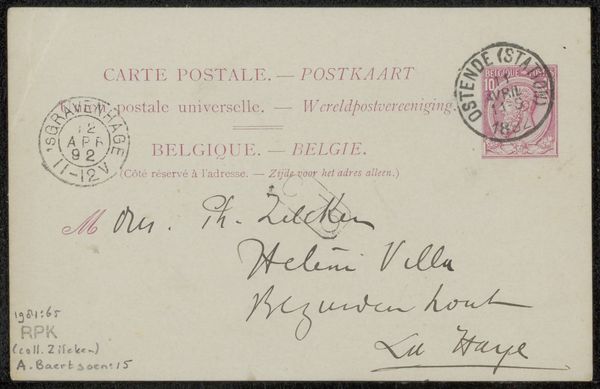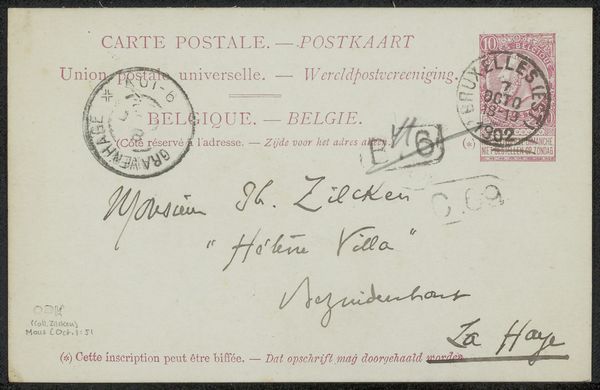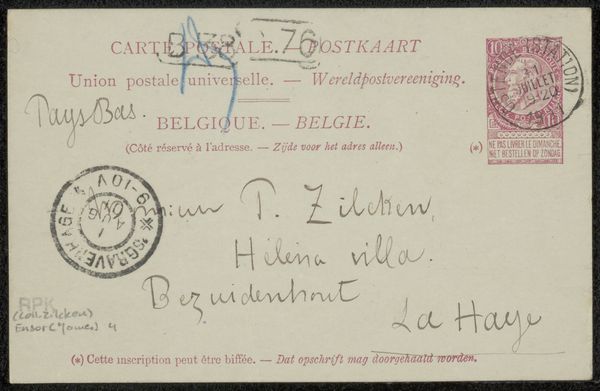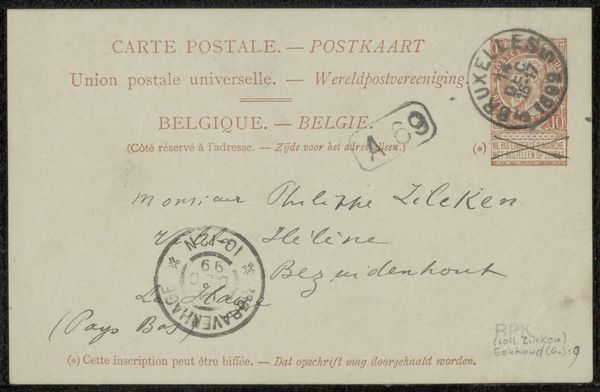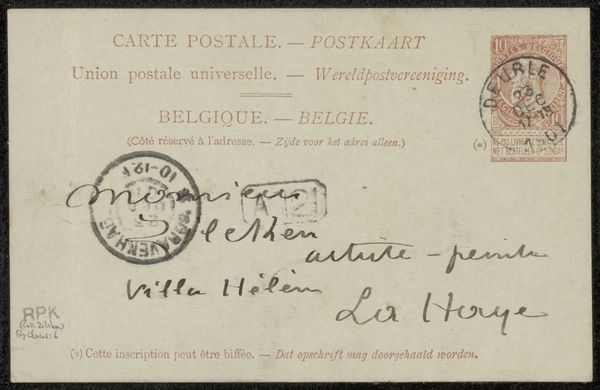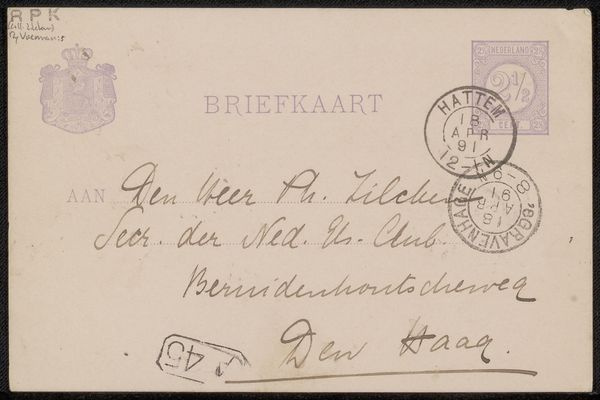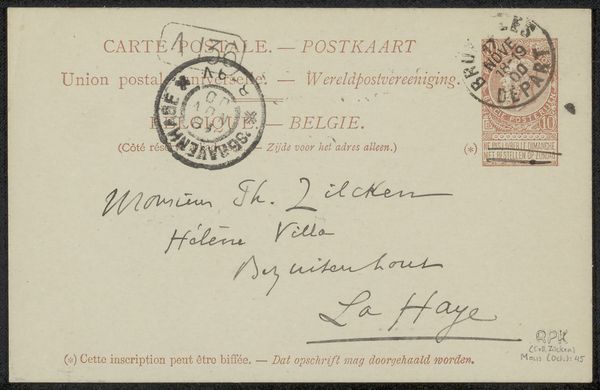
drawing, mixed-media, paper, ink, frottage
#
drawing
#
mixed-media
#
pen sketch
#
hand drawn type
#
paper
#
personal sketchbook
#
ink
#
idea generation sketch
#
ink drawing experimentation
#
pen-ink sketch
#
pen work
#
sketchbook drawing
#
storyboard and sketchbook work
#
sketchbook art
#
frottage
Copyright: Rijks Museum: Open Domain
Editor: So, we have a mixed-media drawing by Rodolphe Wytsman, a postcard actually, sent before 1897. It's called "Briefkaart aan Philip Zilcken." It feels quite informal, like a quick note between colleagues. What jumps out at you? Curator: It's interesting to see this kind of ephemera preserved. It reveals a lot about artistic networks at the time. Notice the official postal markings. They place this within a specific system of communication, a burgeoning network across Europe. How do these infrastructures influence artistic exchange? Editor: That's a good point. It’s easy to forget the importance of physical mail before the internet! How might postal systems and international organizations of the period affect Wytsman's and Zilcken’s practice? Curator: Exactly! Consider the 'Union Postale Universelle' printed on the card, and how artists like Wytsman depended on such structures. The very existence of such institutions allowed for art to participate within a global economy. What art movements might they have engaged with and supported? Editor: Maybe Impressionism? Given the date and location... It also feels like artists corresponding this way highlights the social function of art, it being more than solitary genius working in a garret! Curator: Precisely. It highlights art’s deeply social existence, as opposed to being exclusively artistic labor, it emphasizes how those networks supported aesthetic innovation through personal connections but facilitated trade across markets as well. So how should this postcard, in its social setting, be received? Editor: I never considered a postcard as a document reflecting not only social interactions, but also, almost unknowingly, political policy! Thanks, that really changes how I'll look at similar works moving forward. Curator: Indeed. Seeing art as entangled with the mundane but material conditions of its making broadens our view, right? There's value in exploring this connection to history beyond aesthetics.
Comments
No comments
Be the first to comment and join the conversation on the ultimate creative platform.

